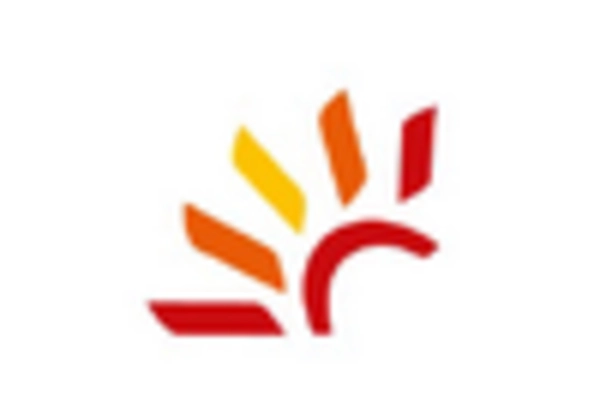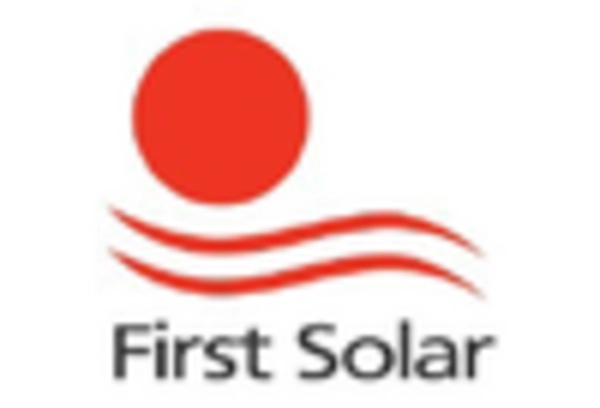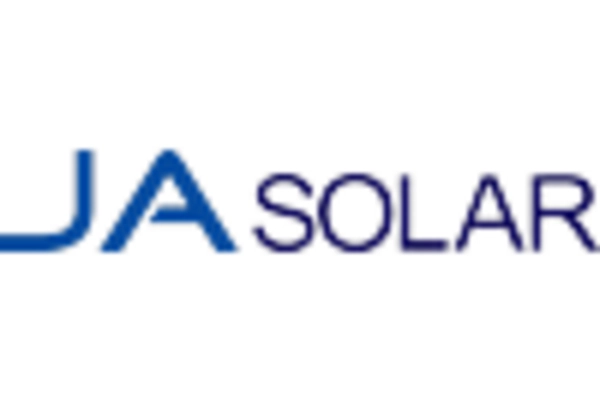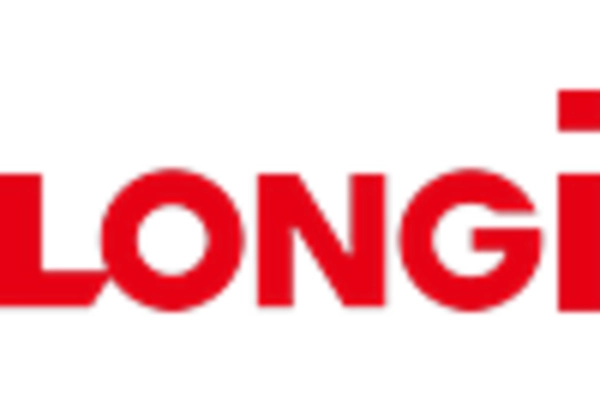The Solar Silicon Wafer Market is currently characterized by a dynamic competitive landscape, driven by increasing demand for renewable energy solutions and advancements in solar technology. Key players such as LONGi Green Energy Technology Co. (CN), JA Solar Technology Co. (CN), and First Solar, Inc. (US) are strategically positioning themselves through innovation and regional expansion. LONGi Green Energy, for instance, focuses on enhancing its production capabilities and technological advancements, which appears to solidify its market leadership. Meanwhile, JA Solar is emphasizing partnerships to expand its global footprint, thereby enhancing its competitive edge. Collectively, these strategies contribute to a robust competitive environment, where innovation and operational efficiency are paramount.
In terms of business tactics, companies are increasingly localizing manufacturing to mitigate supply chain disruptions and optimize logistics. This trend suggests a shift towards a moderately fragmented market structure, where key players exert considerable influence through strategic collaborations and localized operations. The collective actions of these companies indicate a concerted effort to enhance supply chain resilience while maintaining competitive pricing.
In August 2025, LONGi Green Energy Technology Co. (CN) announced the opening of a new manufacturing facility in Southeast Asia, aimed at increasing its production capacity for high-efficiency solar wafers. This strategic move is likely to enhance its market presence in the region, allowing for quicker response times to local demand and reducing transportation costs. Such initiatives may also position LONGi favorably against competitors by ensuring a steady supply of products to meet growing regional needs.
In September 2025, JA Solar Technology Co. (CN) entered into a strategic partnership with a leading energy provider in Europe to co-develop solar projects. This collaboration is indicative of JA Solar's commitment to expanding its market share in Europe, where demand for solar energy is surging. By leveraging local expertise and resources, JA Solar may enhance its project execution capabilities, thereby strengthening its competitive position in the European market.
In October 2025, First Solar, Inc. (US) unveiled a new line of solar wafers that utilize advanced materials to improve efficiency and reduce costs. This innovation reflects First Solar's focus on technological advancement and sustainability, aligning with current market trends that favor environmentally friendly solutions. The introduction of these wafers could potentially disrupt the market by offering customers higher efficiency at competitive prices, thereby reinforcing First Solar's market position.
As of October 2025, the Solar Silicon Wafer Market is witnessing trends that emphasize digitalization, sustainability, and the integration of artificial intelligence in manufacturing processes. Strategic alliances are increasingly shaping the competitive landscape, as companies seek to leverage shared resources and expertise. Looking ahead, it appears that competitive differentiation will evolve from traditional price-based competition to a focus on innovation, technological advancements, and supply chain reliability, suggesting a transformative shift in how companies compete in this sector.
















Leave a Comment